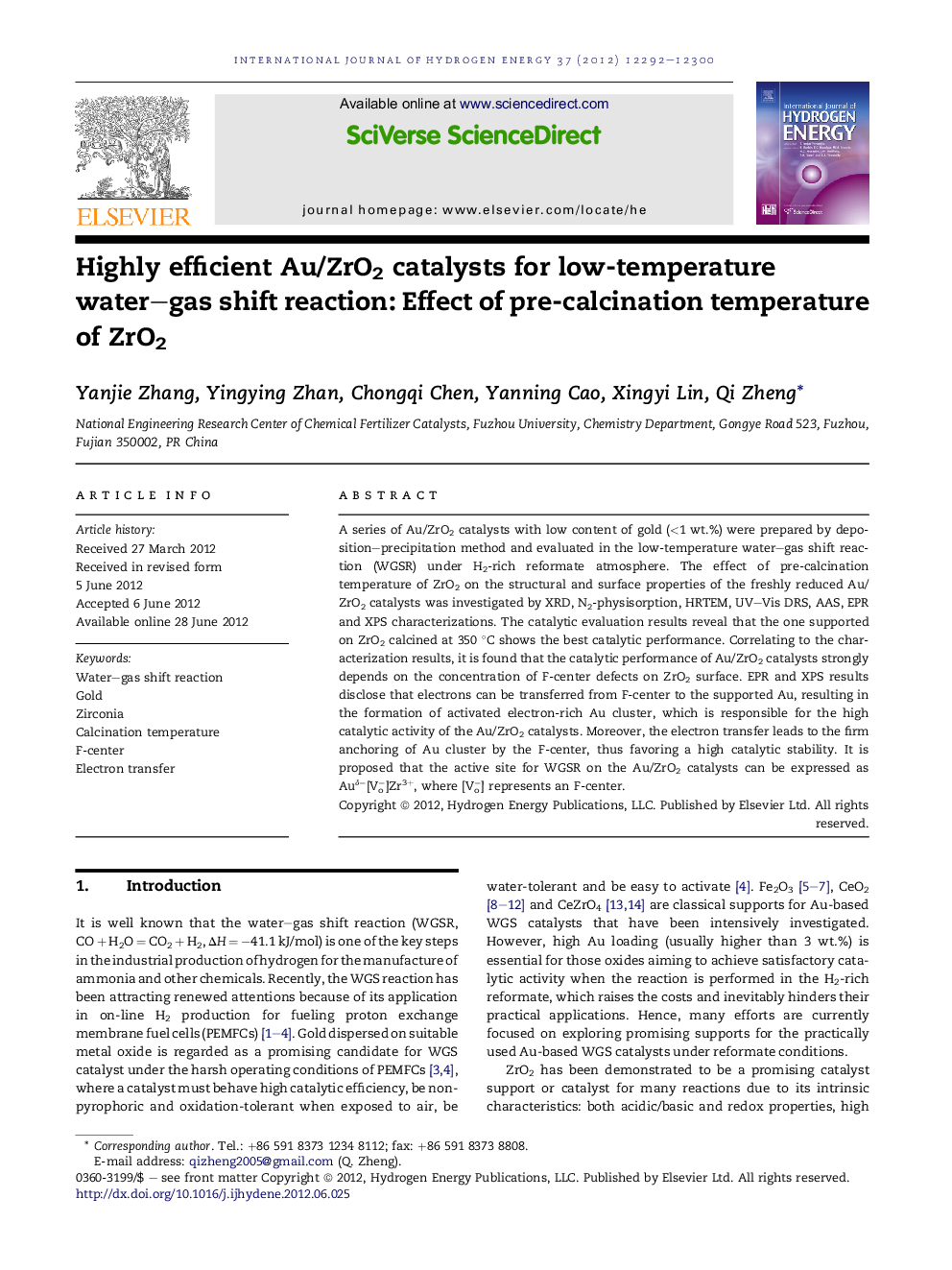| Article ID | Journal | Published Year | Pages | File Type |
|---|---|---|---|---|
| 1271064 | International Journal of Hydrogen Energy | 2012 | 9 Pages |
A series of Au/ZrO2 catalysts with low content of gold (<1 wt.%) were prepared by deposition–precipitation method and evaluated in the low-temperature water–gas shift reaction (WGSR) under H2-rich reformate atmosphere. The effect of pre-calcination temperature of ZrO2 on the structural and surface properties of the freshly reduced Au/ZrO2 catalysts was investigated by XRD, N2-physisorption, HRTEM, UV–Vis DRS, AAS, EPR and XPS characterizations. The catalytic evaluation results reveal that the one supported on ZrO2 calcined at 350 °C shows the best catalytic performance. Correlating to the characterization results, it is found that the catalytic performance of Au/ZrO2 catalysts strongly depends on the concentration of F-center defects on ZrO2 surface. EPR and XPS results disclose that electrons can be transferred from F-center to the supported Au, resulting in the formation of activated electron-rich Au cluster, which is responsible for the high catalytic activity of the Au/ZrO2 catalysts. Moreover, the electron transfer leads to the firm anchoring of Au cluster by the F-center, thus favoring a high catalytic stability. It is proposed that the active site for WGSR on the Au/ZrO2 catalysts can be expressed as Auδ−[Vo−]Zr3+, where [Vo−] represents an F-center.
► 1 wt.% Au/ZrO2 catalysts for water–gas shift reaction (WGSR). ► ZrO2 pre-calcined at different temperatures as catalyst supports. ► Au supported on ZrO2 calcined at 350 °C shows the best catalytic performance. ► Surface F-center defect strongly influences the performance of Au/ZrO2 catalysts. ► The active site for WGSR over the Au/ZrO2 catalysts is proposed.
